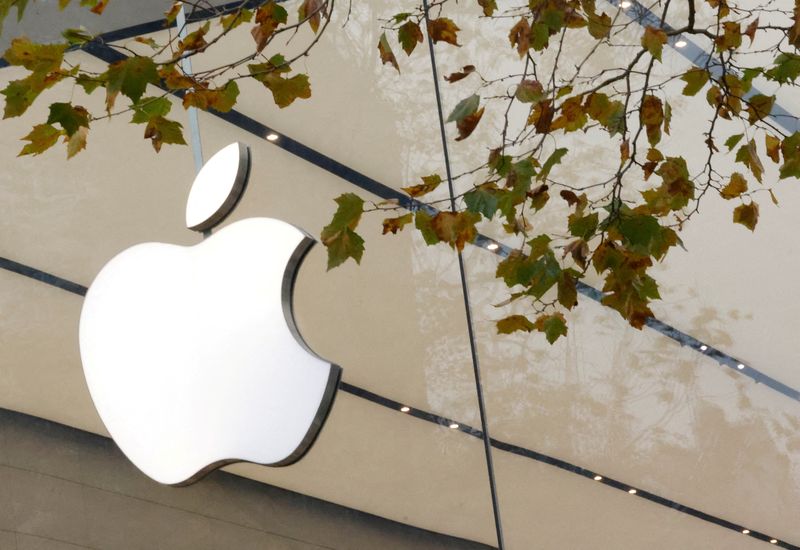Apple now requires a judge’s consent to hand over push notification data
2023.12.12 15:36

© Reuters. FILE PHOTO: The Apple Inc logo is seen at the entrance to the Apple store in Brussels, Belgium November 28, 2022. REUTERS/Yves Herman/File Photo
By Raphael Satter
WASHINGTON (Reuters) – Apple (NASDAQ:) has said it now requires a judge’s order to hand over information about its customers’ push notification to law enforcement, putting the iPhone maker’s policy in line with rival Google and raising the hurdle officials must clear to get app data about users.
The new policy was not formally announced but appeared sometime over the past few days on Apple’s publicly available law enforcement guidelines. It follows the revelation from Oregon Senator Ron Wyden that officials were requesting such data from Apple as well as from Google, the unit of Alphabet (NASDAQ:) that makes the operating system for Android phones.
Apps of all kinds rely on push notifications to alert smartphone users to incoming messages, breaking news, and other updates. These are the audible “dings” or visual indicators users get when they receive an email or their sports team wins a game. What users often do not realize is that almost all such notifications travel over Google and Apple’s servers.
In a letter first disclosed by Reuters last week, Wyden said the practice gave the two companies unique insight into traffic flowing from those apps to users, putting them “in a unique position to facilitate government surveillance of how users are using particular apps.”
Apple and Google both acknowledged receiving such requests. Apple added a passage to its guidelines saying such data was available “with a subpoena or greater legal process.” The passage has now been updated to refer to more stringent warrant requirements.
Apple did not offer an official statement. Google did not immediately respond to a request seeking comment.
Wyden said in a statement that Apple was “doing the right thing by matching Google and requiring a court order to hand over push notification related data.”








